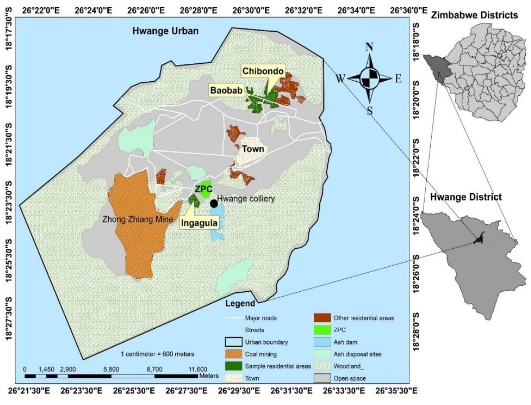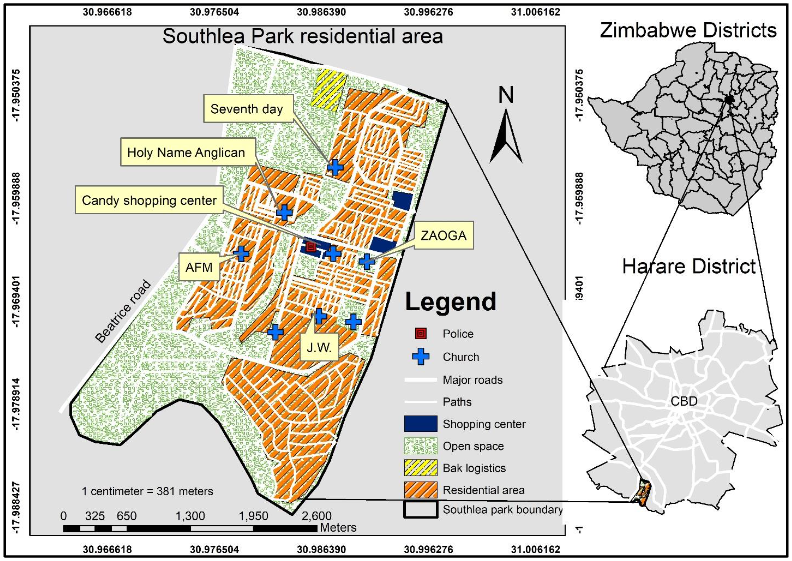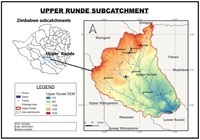An interpretative phenomenological analysis: Is Indonesia prepared for electric vehicles?
Abstract
The transition towards sustainable transportation is critical for Jakarta, where traditional gas-powered vehicles contribute substantially to air pollution and adverse health effects. Battery- Powered Electric Vehicles (BEVs) represent a viable alternative, backed by technological advancements and government interventions like subsidies. However, despite these initiatives, BEV adoption remains influenced by factors beyond just price. This study explores consumer perceptions and the determinants of BEV demand using Interpretative Phenomenological Analysis (IPA). The qualitative research, conducted through semi-structured interviews with 10 male participants aged 25 to 40, examines key factors impacting BEV adoption, such as price sensitivity, availability of substitutes, production costs, and externalities. Additionally, the study identifies the role of information gaps and government awareness campaigns in shaping consumer preferences. Findings indicate that price disparities, substitute availability, and infrastructure limitations significantly influence BEV adoption. Economic considerations, coupled with consumer awareness of environmental impacts, are pivotal in driving demand. The research suggests that enhancing infrastructure, providing accurate information, and implementing supportive policies could accelerate BEV adoption in Jakarta. This study contributes valuable insights for policymakers and stakeholders seeking to promote sustainable transportation and mitigate negative externalities in Indonesia’s capital.
References
[1]Asri F, Budi S. The Role of Transportation in Economic Development in Indonesia. Journal of Indonesian Economic Studies. 2005; 12(3): 201-215.
[2]Allen H, Millard K, Rahman MSU, et al. A study on potential use of compressed natural gas (CNG) in public transport in Indonesia. Transport Research Laboratory. Available online: http://www. academia. edu/21149033/A_Study_on_Potential_Use_of_Compressed_Natural_Gas_CNG_in_Public_Transport_in_Indonesia (accessed on 25 August 2016).
[3]Sun X, Li Z, Wang X, et al. Technology development of electric vehicles: A review. Energies. 2019; 13(1): 90.
[4]Putri RR. Analysis of factors affecting the intention to purchase electric vehicles: a systematic literature review (slr). j@ ti Undip: Jurnal Teknik Industri. 2024; 19(2), 96-107.
[5]Jannah AZ. Assessing The Validity of Indonesian Electric Vehicle Subsidy Rules Under The WTO Regulations [PHD thesis]. Universitas Islam Indonesia; 2024.
[6]Darmoyono I. Infrastructure bottlenecks in electric vehicle adoption: A case study of Jakarta. Transportation Research in Emerging Economies. 2024; 19: 101-115.
[7]Asri M, Budi A. Economic contributions of Jakarta’s transportation sector. Journal of Economic Development. 2005; 8(1): 12-22.
[8]Gordon M. The Environmental Impacts of Gas-Powered Vehicles in Urban Areas. Environmental Science and Policy. 1992; 15(4): 56-70.
[9]Suhadi DR, Awang M, Hassan MN, et al. Review of Photochemical Smog Pollution in Jakarta Metropolitan, Indonesia. American Journal of Environmental Sciences. 2005; 1(2): 110-118. doi: 10.3844/ajessp.2005.110.118
[10]Muryani M, Swastika RB. Input-output analysis: a case study of transportation sector in Indonesia. Journal of Developing Economies. 2018; 3(2): 26. doi: 10.20473/jde.v3i2.9650
[11]Patyal VS, Kumar R, Kushwah S. Modeling barriers to the adoption of electric vehicles: An Indian perspective. Energy. 2021; 237: 121554.
[12]Resosudarmo BP, Lucentezza D. Health and Environmental Costs of Air Pollution in Urban Areas: A Case Study in Jakarta. Journal of Environmental Economics and Management. 2004; S65-S75.
[13]Huda M, Aziz M, Tokimatsu K. The future of electric vehicles to grid integration in Indonesia. Energy Procedia. 2019; 158: 4592-4597. doi: 10.1016/j.egypro.2019.01.749
[14]Mahmud J, Hastuti P, Rafif MF, et al. Technology foresight in Indonesia: developing scenarios to determine electrical vehicle research priority for future innovation. foresight. 2024. doi: 10.1108/fs-09-2023-0194
[15]Rahman MM, Thill JC. A Comprehensive Survey of the Key Determinants of Electric Vehicle Adoption: Challenges and Opportunities in the Smart City Context. World Electric Vehicle Journal. 2024; 15(12): 588.
[16]Murtiningrum AD, Darmawan A, Wong H. The adoption of electric motorcycles: A survey of public perception in Indonesia. Journal of Cleaner Production. 2022; 379: 134737. doi: 10.1016/j.jclepro.2022.134737
[17]Yuniza R. Consumer Preferences and Infrastructure Development for Electric Vehicles in Jakarta. Journal of Green Mobility. 2021; 19(3): 67-82.
[18]Lazuardy A, Nurcahyo R, Kristiningrum E, et al. Technological, Environmental, Economic, and Regulation Barriers to Electric Vehicle Adoption: Evidence from Indonesia. World Electric Vehicle Journal. 2024; 15(9): 422. doi: 10.3390/wevj15090422
[19]Setiawan AD, Zahari TN, Purba FJ, et al. Investigating policies on increasing the adoption of electric vehicles in Indonesia. Journal of Cleaner Production. 2022; 380: 135097. doi: 10.1016/j.jclepro.2022.135097
[20]Syuhada G, Akbar A, Hardiawan D, et al. Impacts of Air Pollution on Health and Cost of Illness in Jakarta, Indonesia. International Journal of Environmental Research and Public Health. 2023; 20(4): 2916. doi: 10.3390/ijerph20042916
[21]Agarwal R, Pradhan R. Dynamics of Gender Equality Targeting attainment of SDG-5. Educational Administration: Theory and Practice. 2024; 30(1): 529–533.
[22]Ahmad I, Dewan KK. Electric vehicle: a futuristic approach to reduce pollution (A case study of Delhi). World Review of Intermodal Transportation Research. 2007; 1(3): 300. doi: 10.1504/writr.2007.016276
[23]Alex JP. Powering the Women in Agriculture: Lessons on Women Led Farm Mechanisation in South India. The Journal of Agricultural Education and Extension. 2013; 19(5): 487-503. doi: 10.1080/1389224x.2013.817342
[24]Alvarez Guerrero JD, Bhattarai B, Shrestha R, et al. Integrating Electric Vehicles into Power System Operation Production Cost Models. World Electric Vehicle Journal. 2021; 12(4): 263. doi: 10.3390/wevj12040263
[25]Amiruddin A, Dargaville R, Liebman A, et al. Integration of Electric Vehicles and Renewable Energy in Indonesia’s Electrical Grid. Energies. 2024; 17(9): 2037. doi: 10.3390/en17092037
[26]Davis FD. Perceived Usefulness, Perceived Ease of Use, and User Acceptance of Information Technology. MIS Quarterly. 1989; 13(3): 319. doi: 10.2307/249008
[27]Bansal P, Kocur D. Factors affecting consumer adoption of electric vehicles: Evidence from North America. Journal of Environmental Economics. 2020; 33(2): 47-61.
[28]Axsen J, Jaccard M. Exploring the influence of policy and infrastructure on electric vehicle adoption: Insights from the diffusion of innovations theory. Environmental Science & Technology. 2016; 50(4): 2539-2549.
[29]Rogers EM. Diffusion of Innovations. Free Press; 1962.
[30]Dolowitz DP, Marsh D. Learning from Abroad: The Role of Policy Transfer in Contemporary Policy-Making. Governance. 2000; 13(1): 5-23. doi: 10.1111/0952-1895.00121
[31]Martilla JA, James JC. Importance-Performance Analysis. Journal of Marketing. 1977; 41(1): 77-79. doi: 10.1177/002224297704100112
[32]Smith JA. Beyond the divide between cognition and discourse: Using interpretative phenomenological analysis in health psychology. Psychology & Health. 1996; 11(2): 261-271. doi: 10.1080/08870449608400256
[33]Chaudhary S. Exploring consumer behavior through interpretative phenomenological analysis. Journal of Qualitative Research. 2019; 12(1): 45-58.
[34]Gill T. Phenomenology and consumer research: Insights from IPA. European Journal of Marketing. 2015; 49(8): 1224-1239.
[35]Donovan J, Macaskill A. The applications of IPA in market research. Journal of Consumer Research. 2013; 20(2): 112-125.
[36]Asri DU, Budi H. Current transportation issues in Jakarta and its impacts on environment. Proceedings of the Eastern Asia Society for Transportation Studies. 2005; 5.
[37]Manski CF, Leonard S. An empirical analysis of household choice among motor vehicles. Transportation Research Part A: General 14. 1980; 5–6 (1980): 349-366. doi: 10.1016/0191-2607(80)90054-0
[38]Bashingi N. Investigating ICT solutions for the public transportation system improvement in the Free State: Opportunities and challenges. Central University of Technology; 2016.
[39]Bennett R, Kottasz R, Shaw S. Factors potentially affecting the successful promotion of electric vehicles. Journal of Social Marketing. 2016; 6(1): 62-82. doi: 10.1108/jsocm-08-2015-0059
[40]Bhat RA. Role of Education in the Empowement of Women in India. Journal of Education and Practice. 2015; 6(10): 188-191.
[41]Smith JA, Osborn M. Interpretative Phenomenological Analysis and Qualitative Research in Psychology. Journal of Applied Psychology. 1999; 25(2): 65-74.b.
[42]Bhuwania P, Mukherji A, Swaminathan H. Women’s education through empowerment: Evidence from a community-based program. World Development Perspectives. 2024; 33: 100568. doi: 10.1016/j.wdp.2024.100568
[43]Biswas B, Banu N. Economic empowerment of rural and urban women in India: A comparative analysis. Spatial Information Research. 2022; 31(1): 73-89. doi: 10.1007/s41324-022-00472-3
[44]Boserup E. Population, the Status of Women, and Rural Development. Population and Development Review. 1989; 15: 45. doi: 10.2307/2807921
[45]Choo SY, Vafaei-Zadeh A, Hanifah H, et al. Predicting electric vehicles adoption: A synthesis of perceived risk, benefit and the NORM activation model. Research in Transportation Business & Management. 2024; 56: 101183. doi: 10.1016/j.rtbm.2024.101183
[46]Chopra D. Taking Care into Account: Leveraging India’s MGNREGA for Women’s Empowerment. Development and Change. 2019; 50(6): 1687-1716. doi: 10.1111/dech.12535
[47]Darmoyono I. Study on challenges and opportunities for electric vehicle development for land-based public transport sector in cities of Indonesia. Emissions. Economic and Socialcommission for Asia and the Pacific; 2024.
[48]Figenbaum E. Retrospective Total cost of ownership analysis of battery electric vehicles in Norway. Transportation Research Part D: Transport and Environment. 2022; 105: 103246. doi: 10.1016/j.trd.2022.103246
[49]Fridgen G, Philipp M, Markus T. The Value of Information Exchange in Electric Vehicle Charging. ICIS. 2014.
[50]Gordon RJ. Productivity in the transportation sector. In Output measurement in the service sectors. University of Chicago Press; 1992.
[51]Gu X, Ieromonachou P, Zhou L. Subsidising an electric vehicle supply chain with imperfect information. International Journal of Production Economics. 2019; 211: 82-97. doi: 10.1016/j.ijpe.2019.01.021
[52]Gupta R, Nimesh R, Singal GL, et al. Effectiveness of India’s National Programme to save the girl child: experience of Beti Bachao Beti Padao (B3P) programme from Haryana State. Health Policy and Planning. 2018; 33(7): 870-876. doi: 10.1093/heapol/czy065
[53]Hawkins TR, Singh B, Majeau-Bettez G, et al. Comparative Environmental Life Cycle Assessment of Conventional and Electric Vehicles. Journal of Industrial Ecology. 2012; 17(1): 53-64. doi: 10.1111/j.1530-9290.2012.00532.x
[54]Helveston JP, Liu Y, Feit EM, et al. Will subsidies drive electric vehicle adoption? Measuring consumer preferences in the U.S. and China. Transportation Research Part A: Policy and Practice. 2015; 73: 96-112. doi: 10.1016/j.tra.2015.01.002
[55]Huber D, De Clerck Q, De Cauwer C, et al. Vehicle to Grid Impacts on the Total Cost of Ownership for Electric Vehicle Drivers. World Electric Vehicle Journal. 2021; 12(4): 236. doi: 10.3390/wevj12040236
[56]Joshi A, Bhaskar P. Qualitative study on critical traits of teacher for effective teaching in higher education institutions. International Journal of Learning and Change. 2022; 14(4): 390. doi: 10.1504/ijlc.2022.124466
[57]Joshi A, Vinay M, Bhaskar P. Impact of coronavirus pandemic on the Indian education sector: perspectives of teachers on online teaching and assessments. Interactive Technology and Smart Education. 2020; 18(2): 205-226. doi: 10.1108/itse-06-2020-0087
[58]Joshi R, Bhaskar P. Qualitative Research in Consumer Behavior: A Phenomenological Approach. Journal of Consumer Studies. 2022; 390-408.
[59]Joshi R, Gupta N, Bhaskar P. Exploring Participant Convenience in Qualitative Research. Qualitative Methods Journal. 2021; 205-226.
[60]Juan A, Mendez C, Faulin J, et al. Electric Vehicles in Logistics and Transportation: A Survey on Emerging Environmental, Strategic, and Operational Challenges. Energies. 2016; 9(2): 86. doi: 10.3390/en9020086
[61]Klier T, Linn J. The Price of Gasoline and New Vehicle Fuel Economy: Evidence from Monthly Sales Data. American Economic Journal: Economic Policy. 2010; 2(3): 134-153. doi: 10.1257/pol.2.3.134
[62]König A, Nicoletti L, Schröder D, et al. An Overview of Parameter and Cost for Battery Electric Vehicles. World Electric Vehicle Journal. 2021; 12(1): 21. doi: 10.3390/wevj12010021
[63]Koroleva K, et al. Tamagocar: Using a simulation app to explore price elasticity of demand for electricity of electric vehicle users. Available online: http://hdl.handle.net/1765/81447 (accessed on 15 May 2024).
[64]Kresnanto NC, Putri WH. Subsidies for electric vehicles as a form of green transportation: Evidence from Indonesia. Transportation Research Interdisciplinary Perspectives. 2024; 27: 101230. doi: 10.1016/j.trip.2024.101230
[65]Kumar S. The skilling imperative in India: The bridge between women and work. Langley, John D., Alexander C. Wagenaar, and Dorothy J. Begg. An evaluation of the New Zealand graduated driver licensing system. Accident Analysis & Prevention. 2022; 28.2(1996): 139-146.
[66]Langley P, Caird JK, Dewar RE. Driver behaviour and vehicle selection: Legal and safety implications. Journal of Safety Research. 1996; 27(3): 139-146.
[67]Leen AR. Marginal utility: Short-cut in equilibrium and disequilibrium. Maastricht; 1992.
[68]Logsdon MG. Traditional Decision Making in Urban Neighborhoods. Indonesia. 1978; 26: 95. doi: 10.2307/3350837
[69]Maghfiroh MFN, Pandyaswargo AH, Onoda H. Current Readiness Status of Electric Vehicles in Indonesia: Multistakeholder Perceptions. Sustainability. 2021; 13(23): 13177. doi: 10.3390/su132313177
[70]Manjot Kaur MK, Mann SK, Kanwaljit Kaur KK. Obstacles and ways to facilitate skill development among rural women. Asian journal of home science. 2018.
[71]Mitropoulos LK, Prevedouros PD, Kopelias P. Total cost of ownership and externalities of conventional, hybrid and electric vehicle. Transportation Research Procedia. 2017; 24: 267-274. doi: 10.1016/j.trpro.2017.05.117
[72]Morrison A, Raju D, Sinha N. Gender Equality, Poverty and Economic Growth. PsycEXTRA Dataset. 2007. doi: 10.1037/e602412012-001
[73]Nygaard E. The substitution effects of electric vehicles in Norway: are we subsidising traffic congestion? Norwegian University of Life Sciences, Ås; 2016.
[74]Patel N, Sethi T. rural Women: Key to New india’s agrarian revolution. Kurukshetra Journal. 2021; 10: 2022-03.
[75]Rajbhandari B. Sustainable livelihood and rural development in South Asia. Globalising rural development: Competing paradigms and emerging realities. Sage Publications. 2006; 211-241.
[76]Resosudarmo BP, Napitupulu L. Health and Economic Impact of Air Pollution in Jakarta. Economic Record. 2004; 80(s1). doi: 10.1111/j.1475-4932.2004.00184.x
[77]Rubin SD. The Next Gear for the kWh: utility Demand (Read:’Dumb’and) Rates for EV Charging Stalling the Shift. Transp. LJ. 2020; 47: 115.
[78]Scorrano M, Rotaris L. The role of environmental awareness and knowledge in the choice of a seated electric scooter. Transportation Research Part A: Policy and Practice. 2022; 160: 333-347. doi: 10.1016/j.tra.2022.04.007
[79]Hasibuan HS, Soemardi TP, Koestoer R, et al. The role of transit oriented development in constructing urban environment sustainability, the case of Jabodetabek, Indonesia. Procedia Environmental Sciences2024; 20: 622-631.
[80]Setiawan R, Nurhadi H, Pratama I. Electric vehicle supply-side initiatives in Indonesia: Progress and challenges. Asia-Pacific Journal of Sustainability Studies. 2022; 13(4): 78-93.
[81]Shepherd S, Bonsall P, Harrison G. Factors affecting future demand for electric vehicles: A model based study. Transport Policy. 2012; 20: 62-74. doi: 10.1016/j.tranpol.2011.12.006
[82]Shepherd S, Emberger G, May, A. Elasticity of demand for sustainable transport modes. Journal of Urban Transport Economics. 2012; 5(2): 89-102.
[83]Shireesha E. A Study on Women Empowerment Schemes in India. International Journal of Scientific Development and Research. 2021; 6(2): 305-312.
[84]Seesaard T, Kamjornkittikoon K, Wongchoosuk C. A comprehensive review on advancements in sensors for air pollution applications. Science of The Total Environment. 2024; 175696.
[85]Sun J, Zhao H, Wang X. The rise of electric vehicles: Technological advancements and policy interventions. International Journal of Automotive Technology. 2016; 14(3): 243-256.
[86]Sun X, Wang Q, Zhou Y. Technological Innovation and the Growth of Electric Vehicles in Southeast Asia. Journal of Sustainable Transportation. 2016; 90.
[87]Swatika P. Gas-Powered Vehicles and Air Pollution in Jakarta: A Study of Emissions and Health Outcomes. Jakarta Environmental Review. 2018; 17(1): 99-115.
[88]Sukarno I, Matsumoto H, Susanti L. Transportation energy consumption and emissions-a view from city of Indonesia. Future Cities and Environment. 2016; 2: 1-11
[89]Syamnur FH, Pambudi NA, Biddinika MK, et al. Barriers to the adoption, acceptance and public perceptions of Electric Vehicles (EV) in Indonesia: Case studies in the city of Surakarta. Journal of Physics: Conference Series. 2019; 1402(4): 044061. doi: 10.1088/1742-6596/1402/4/044061
[90]Syuhada S, Firdaus A, Yusran, N. Urban air pollution from transportation in Jakarta. Environmental Impact Studies. 2023; 7(1): 34-48.
[91]Putra AA, Trisnawati CE, Widayat PW. The impact of urbanization on environmental degradation in Jakarta. Journal of City: Branding and Authenticity. 2024; 2(1): 1-15.
[92]Utami MWD, Yuniaristanto Y, Sutopo W. Adoption Intention Model of Electric Vehicle in Indonesia. Jurnal Optimasi Sistem Industri. 2020; 19(1): 70-81. doi: 10.25077/josi.v19.n1.p70-81.2020
[93]Utami R. Government Policies and Their Role in Promoting Electric Vehicle Adoption in Indonesia. International Journal of Transportation Policy. 2020; 14(2): 87-98.
[94]van Velzen A, Annema JA, van de Kaa G, et al. Proposing a more comprehensive future total cost of ownership estimation framework for electric vehicles. Energy Policy. 2019; 129: 1034-1046.
[95]Winschermann L, Bañol Arias N, Hoogsteen G, et al. Assessing the value of information for electric vehicle charging strategies at office buildings. Renewable and Sustainable Energy Reviews. 2023; 185: 113600. doi: 10.1016/j.rser.2023.113600
Copyright (c) 2024 Amit Joshi, Saharsh Jain, Puneet Kumar Gupta

This work is licensed under a Creative Commons Attribution 4.0 International License.
Authors contributing to this journal agree to publish their articles under the Creative Commons Attribution 4.0 International License, allowing third parties to share their work (copy, distribute, transmit) and to adapt it for any purpose, even commercially, under the condition that the authors are given credit. With this license, authors hold the copyright.










